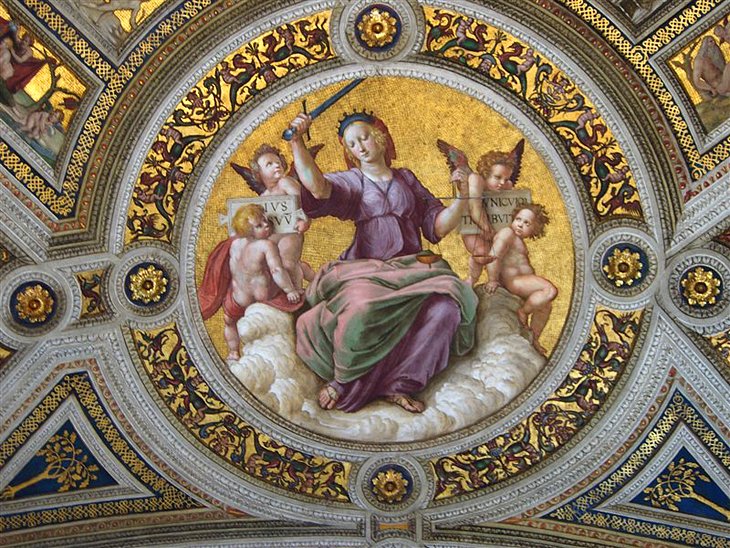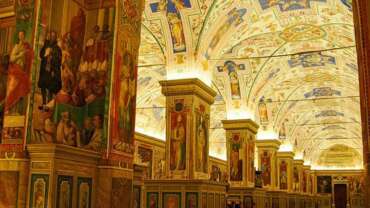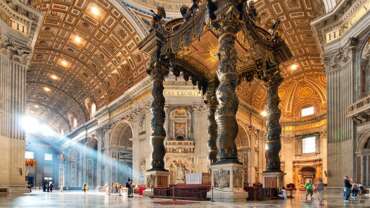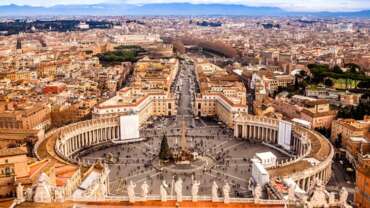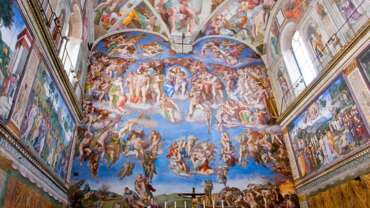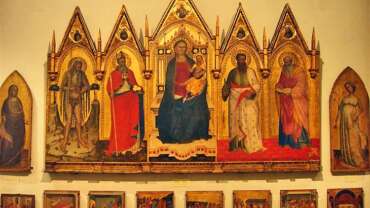Vatican Palace Highlights
These rooms, commissioned for the Palace of the Vatican’s papal apartments by the art-loving Pope Julius II and later by Pope Leo X, are covered with a magnificent series of frescoes by Raphael. In re-discovering the traditions of historical painting, Raphael began an art tradition that was to be followed for centuries. In each of the scenes, he uses a classical symmetry in the composition, positioning the characters in perspective around a central focal point. While some scenes were painted by students or other great artists after his death, the Stanza della Segnatura and the Stanza di Eliodoro were both painted by Raphael himself, as were those in the Sala della Segnatura. Completed between 1508 and 1511, these works and those in the Sistine Chapel represent the supreme achievement of Renaissance painting. The paintings convey that period’s culture in all its splendor and show humanist themes – the natural sciences attainable without divine revelation, philosophy, history, mathematics, civil law, and justice.
Pope Alexander VI, a Borgia, had a private residence for himself and his family built inside the Vatican Palace, known today as the Appartamento Borgia. Between 1492 and 1495, Pinturicchio and his assistants painted a series of scenes that combined Christian subjects with ancient and Renaissance humanist themes. The first room shows prophets and Sibyls; the second, the Creed, with prophets and Apostles. The third room is decorated with allegories of the seven liberal arts, and the fourth with legends of saints. Scenes from the New Testament cover the fifth.
It’s easy to miss this little gem as you leave the Raphael Rooms and go through the Sala dei Chiaroscuro, where your attention will be on the wooden ceiling. But in the corner is a small doorway to Nicholas V’s Chapel, also known as Cappella Niccolina. It is completely lined in frescoes by the Florentine monk of the early Renaissance, Fra Beato Angelico. The subjects of the frescoes are the life and martyrdom of St. Stephen and St. Lawrence, and like all Fra Angelico’s work, these paintings speak of a deceptive simplicity, gentleness, and devotion that almost makes you overlook the genius of this talented artist.



